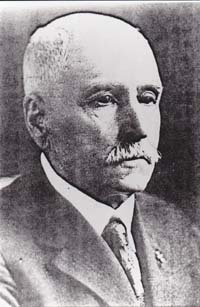Francis Johnson Kennedy (below, circa 1920) died on January 9, 1924, in St. Paul, Minnesota. His obituary claimed he was “prohibited from participating in General Custer’s famous and ill-fated expedition because of a snake-bite.” That contradicts all other accounts that have him in sick quarters prior to the battle, with the pack train in June, and fighting on Reno Hill during the battle. At some point, Kennedy apparently said he led Capt. Keogh’s horse Comanche. If his obituary is to be believed, he was perhaps the only “Reverse Sole Survivor;” i.e., someone who was at the battle but claimed not to have been.
Other Seventh Cavalry anniversaries this week include:
John W. Burkman was born in Allegheny County, Pennsylvania, on January 10, 1839. “Old Nutriment” cared for the Custer horses.
John Dolan married Lena C. Eagan on January 10, 1876. His second marriage to Josephine Fisher was in 1900. He was on detached service during the battle.
Timothy Sullivan died on January 10, 1903. He was a Private with Company L who was with the pack train and in the hilltop fight.
George Blunt was born on January 11, 1845, in Baltimore, Maryland. He died of gas asphyxiation at the Joyce Hotel in Baltimore on November 23, 1905.
Benjamin Franklin Burdick died on January 11, 1930, in Albany, New York, and was buried in the Beverwyck Cemetery in Rensselaer, New York.
Bernard Lyons died on January 12, 1901. He was a Private with Company F who was in the hilltop fight.
John Jordan died in Hartford, Connecticut, on January 12, 1906. He was a Private with Company C who participated in the hilltop fight.
Lawrence Murphy died on January 13, 1888, at the Soldiers’ Home in Washington, D.C. He was a Sergeant with Company E, but he was on detached service during the battle.
William Martin died in Knoxville, Tennessee, on January 13, 1900, and was buried there. He was a Private with Company B who participated in the hilltop fight.
James Madison DeWolf was born in Mehonpany, Pennsylvania, on January 14, 1843. He was the Acting Assistant Surgeon for the Seventh, and he was killed during the battle.
Thomas F. O’Neill was born on January 14, 1846, in Dublin, Ireland. He was a Private with Company G who participated in the valley and hilltop fights.
Andrew Fredericks died on January 14, 1881, at Fort Totten, Dakota Territory. He was buried in the Custer National Cemetery on Crow Agency, Montana.